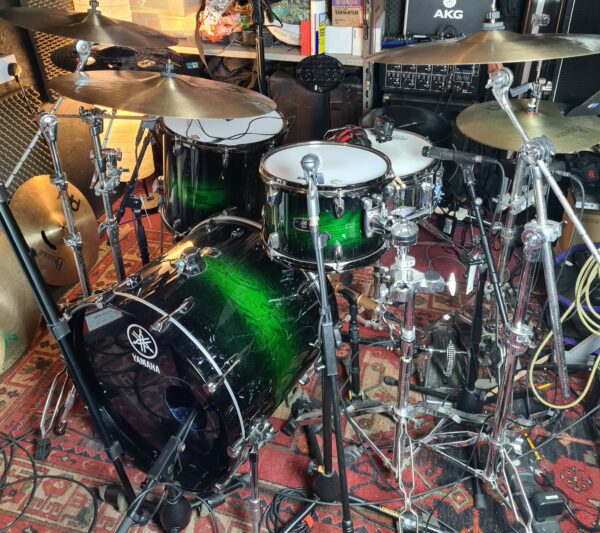How and why you should record your own playing.
Why record yourself?
One topic that I’ve been talking about a lot with my students currently is the importance of recording yourself. Recording yourself is the only objective way of being able to reflect on your own playing, as well as prepare yourself properly for any upcoming studio sessions. It also lets you properly hear important aspects of your playing such as your drum sound, balance on the kit/consistency and time feel, which you can’t always analyse accurately whilst you’re also playing.
Recording drums with your phone
A simple way to start is just use your phone in front of the kit and see how you sound through that. Obviously the sound won’t be particularly flattering, however that has it’s advantages as it will quite often exaggerate any issues you have in your playing (such as overdoing it on the cymbals). This will then help you rein those issues in quickly and improve your sound overall.

What to listen for when listening back
When listening back to your playing, reference it against a drum sound or performance you like, and be as objective as possible about what you would like to improve (without beating yourself up). Listen to the overall balance of your drums (what is too loud/not loud enough), the pitch of your drums (what needs to be higher/lower), the timbre (what is too dead/what is ringing too much) and the feel (what feels rushed/dragged). There will always be something to improve as your ears will get better as part of the exercise, so try to keep hold of some of your older recordings so you can hear them later and gauge your improvement.
Recording drums into your computer
If you want to take it a step further you can then look at a “proper” recording setup, even if only a basic one. To do that you will need a recording interface, and ideally at least two microphones. The recording interface is required to amplify the analogue signal of the mic and convert that to a digital format for your computer, as well as allow you to monitor (hear) the recording software (DAW) from your computer. Once you have that setup you can hear yourself in more detail, and better in context with any track you’re recording.
As far as microphones for recording drums, I’d recommend at least two, one for the kick drum and one for the overall kit. You can place one mic in front of the kit or over the kit (called an overhead) to get a general picture of the kit, then blend the kick mic in to support the kick sound. I currently have a simple two mic setup for recording social media posts consisting of a Rode NT1a mic in front of the kit and a Behringer B19A in the kick, which I find gives me enough detail to hear the kit. You can hear the setup being in this clip:
Not a sound you’d want for a final production, but for a quick recording/social media post it works well enough (especially as this setup plugs straight into my phone – more on that in a different post).
Anyway those are a few thoughts on recording as part of practice. As always if you’d like to discuss this then please feel free to get in touch and book a lesson!
